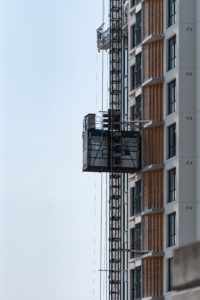Blog
Rent vs. Buy 2020
Etobicoke Detached Rent vs. Buy
| Rental | 4,000 | Purchase | 1,350,000 |
| First/Last Deposit | 8,000 | Down Payment 20% | 270,000 |
| Closing Costs less rebate | 26,175 | ||
| Total | 8,000 | Total | 296,175 |
| Rent | 4,000 | Mortgage @ 2.9% | 5,055 |
| Property Taxes | Property Taxes | 500 | |
| Maintenance Fees | Maintenance Fees | ||
| Insurance | 75 | Insurance | 130 |
| Utilities and upkeep | 300 | Utilities and upkeep | 800 |
| Monthly Costs | 4,375 | Monthly Costs | 6,485 |
| Potential GIC Returns on DP and CC* | 631 | Monthly Equity Gained | 2,644 |
| Net Costs | 3,744 | Net Costs | 3,841 |
*Potential GIC returns (2.2%/year) on down payment and closing costs, and additional monthly costs, that would be earned if invested.
Leslieville Condo Rent vs. Buy
| Rental | 2,450 | Purchase | 700,000 |
| First/Last Deposit | 4,900 | Down Payment 5.33% / 20% | 140,000 |
| Cash Required for Closing Costs Less FTB Rebate | 14,175 | ||
| Total | 4,900 | Total | 154,175 |
| Rent | 2,450 | Mortgage @ 2.9% | 2,622 |
| Property Taxes | Property Taxes | 225 | |
| Maintenance Fees | Maintenance Fees | 475 | |
| Insurance | 60 | Insurance | 60 |
| Utilities and upkeep | 100 | Utilities and upkeep | 200 |
| Monthly Cost | 2,550 | Monthly Cost | 3,582 |
| Potential GIC Returns on DP and CC* | 322 | Monthly Equity Gained | 1,371 |
| Net Costs | 2,228 | Net Costs | 2,211 |
Spotlight: Montreal Real Estate
After Toronto and Vancouver – Canada’s most talked about Real Estate markets – started to sputter in 2017, other cities started to garner attention. Cities like Ottawa, Montreal and Halifax have seen both sales and prices reach new heights while Toronto and Vancouver sales declined and went into recovery mode over the past two years. In this blog post, we wanted to take a look at Montreal Real Estate to shed some light on its market and the differences with purchasing here compared to Toronto.
Montreal is Canada’s second biggest city with 3.5 Million people living there, that’s a million more people living there than in Vancouver. Montreal flew under the radar because its real estate appreciation hasn’t been as sexy; not until recently when government regulation and insane price appreciation finally forced many Buyers to look east of Toronto.
| Price CREA October 2019 HPI | Median Condo Price | Sales October 2019 | Vacancy Rate 2018 Stat Can | Average Rent 1bedroom via Pad Mapper | Median Household Income (2015 Stats Can) |
|
|---|---|---|---|---|---|---|
| Greater Toronto | 814,000 | $540,000 | 8491 76,413 | 1.1% | $2,350 | 78,373 |
| Montreal Metro | 374,000 | $280,000 | 4211 43,750 | 2% | $1,530 | 61,790 |
Prices: If you’re feeling a bit over leveraged in Toronto, Montreal is the place for you. You can typically buy 2 homes in Montreal for less than the price of one in Toronto.
Housing Stock: Mystery solved: Toronto’s missing middle is in Montreal. Building in Toronto has centered around tearing down Main Street style buildings and war time bungalows to erect towers and urban mansions, looking for a Triplex in Toronto is a bit like finding a needle in a haystack. Montreal’s plex stock is rather plentiful. Many Urban neighbourhoods offer a wide range of income properties to choose from: duplex, triplex and detached style homes are equally prevalent. This abundance of housing is the likely contributor to more reasonable rental rates in Urban areas and keeps house prices in check.
More Renters: Montreal ownership rates sits among the lowest of all major Canadian cities at 56% while Toronto sits at 67%, both below Canada’s average of 68%. Montreal has been a very affordable rental option for those looking to live in a big city. It seems like word is getting out about their cheap rent as the cities vacancy rate more than halved, dropping from 4.6% in 2016 to 2% in 2018. Upward pressure on rental prices is likely to continue as vacancy rates remain tight.
Getting Around: With what feels like an infinite number of bridges and under passes in Montreal highways, traffic and construction feels equally horrible in Montreal and Toronto. However, if you live in Montreal you are much more likely to have a rail option within walking distance. While Toronto invested in street cars, Montreal stuck to subway and rail. This makes the sought-after, transit-friendly, walkable area within a 15 minute bike ride from downtown much easier to find and afford in Montreal.
Sold on Montreal? Here are some note-worthy differences to be aware with a purchase:
Deposits: In Montreal, it’s common to purchase a home without putting any deposit down or transfer of funds until your closing date. In Toronto, you’ve got to show them the money. A 5% range for a deposit is expected in Toronto and many Buyers will offer hefty deposit to strengthen their chances against another bidder. Sometimes Sellers in Toronto will even take a lower selling price, because they are worried a small deposit signals less chances the Buyer will be able to close on the property.
Conditional in Toronto vs. Montreal means different things: Typically financing and home inspection conditions in Toronto are written strongly in favour of the Buyer. Allowing the Buyer to get out of the deal if needed. In Montreal, the financing condition is a standard condition which is part of the purchase agreement (not written on a Schedule like Ontario). If you say you can’t find financing, the Seller has the right to force you to use a different lender of their choice, provided you can still meet the agreed upon terms. Very different from the opt out conditions used in Ontario.
Disclosure: In Montreal, they have a mandatory form that Sellers must fill out called a declaration by vendor. This document requires the seller to identify any known issues with the property they are selling. This type of form used to be more popular in Ontario, until a few vocal lawyers advised Sellers against it. For some properties in Toronto, it can be like pulling teeth getting an agent to answer some pretty standard questions. This is something I believe Toronto is getting wrong and Montreal is doing right. Buyers should have a right to as much information as possible to help them make an educated and informed decision.
Marketing and Viewings: Montreal is a little more laid back than Toronto and many local agents are still adjusting to the new pace of the market. Viewing a home in its entirety is often not possible prior to offering on property with multiple units. For example, it’s common to view one unit in a duplex and then submit an offer conditional on seeing the other unit. Open Houses are less common and often only on Sundays. Much like in Toronto, finding a good agent who understands how the market is changing and who goes the extra mile to ensure their clients have every advantage possible is key.
Till Death Do You Part: In Quebec, they have a rule for landlords that if your tenant is 70 or older, you cannot evict them. Even if it’s to take over the unit for yourself. This is how Quebec looks out for their elderly population, by ensuring they have a place to live into their old age. It does, however, pose an issue for buyers looking for a personal or investment property. Since the Montreal Real Estate market is picking up and rents are still fairly low, you may find a too-good-to-be-true property only to realize that an older tenant is paying $400/month.
Considering a move in Montreal or Toronto? Let me connect you with a great Realtor, email me here.

Looking for somewhere a little closer to home for your purchase? Hamilton has similar housing stock to Montreal and is working on transit improvements with a new LRT scheduled for completion in 2020. Reach out if you’d like to find out more!
Toronto Real Estate, Where Are We Now?
As we head into the fall market, many Greater Toronto Area housing segments are hitting new price highs. Something that hasn’t been seen for a couple of years. Although the average sale price across the GTA still remains almost $100,000 below the high reached in April 2017, TREB’s GTA Home Price Index (HPI) seems destined for new heights, potentially before the year is out. The HPI is a more sophisticated measurement of home prices than average sales and is less likely to see large variances caused by outlying sales. This index tends to trail real time sales by 2 months as the data used is based on the closing date instead of the sold date used for average sales.
Want to know if your home is reaching all time price highs? Check out the chart below. Be aware that many neighbourhoods within the areas outlined below may be seeing greater variances. For instance, Detached homes in Toronto neighbourhoods like Leslieville and Roncesvalles are actually up 5-12% since May 2017 while neighbourhoods such as Bridle Path and St. Andrews remain down.
| HPI Index Comparison | ||||||
| May 2017 | September 2019 | |||||
| Treb | 269 | 821,000 | 266 | 805,500 | -1.89% | Down |
| Detached | 281 | 1,050,000 | 256 | 947,000 | -9.81% | Down |
| Condo | 231 | 465,000 | 274 | 547,000 | 17.63% | Up |
| Toronto | 256 | 830,000 | 275 | 890,000 | 7.23% | Up |
| Detached | 280 | 1,229,000 | 259 | 1,136,000 | -7.57% | Down |
| Condo | 232 | 478,000 | 281 | 578,000 | 20.92% | Up |
| Halton | 280 | 958,000 | 279 | 900,000 | -6.05% | Down |
| Peel | 257 | 729,000 | 261 | 740,000 | 1.51% | Up |
| Detached | 261 | 918,000 | 253 | 894,000 | -2.61% | Down |
| Condo | 228 | 394,000 | 274 | 469,000 | 19.04% | Up |
| York | 308 | 1,052,000 | 254 | 858,000 | -18.44% | Down |
| Detached | 319 | 1,244,000 | 257 | 977,000 | -21.46% | Down |
| Condo | 232 | 511,000 | 233 | 511,000 | 0.00% | Even |
| Durham | 263 | 615,000 | 243 | 567,000 | -7.80% | Down |
| Detached | 259 | 673,000 | 238 | 617,000 | -8.32% | Down |
| Condo | 237 | 425,000 | 243 | 413,000 | -2.82% | Down |
| Dufferin | 259 | 594,000 | 263 | 604,000 | 1.68% | Up |
| Simcoe | 262 | 561,000 | 240 | 526,000 | -6.24% | Down |
Sales
Sales are bouncing back from 2018 lows. Annual sales peaked in 2016 and began their decent in Q2 of 2017. The past 3 months of sales have shown increases over both 2018 and 2017, but still well off the feverish levels of 2016. What is noteworthy is that Buyers are rushing back to the Detached home segment. The number of detached sales in the GTA have been seeing 20-30% year/year increases in recent months.
Prices
Trebs HPI index continues to tick closer to the highs reached in 2017. At 265.5 it’s just 3.5 points off the high reached in May of 2017. The average sale price of $843,000 for September 2019 was the highest September on record, but remained well below the all the time high of $918,000 reached in April 2017.
Inventory
Active Listings in September are down 15% from last year. With demand outstripping the number of new listings, inventory has been tightening in the GTA as we continue into the fall market.
Rental Market
The number of apartments listed to lease in Q3 of 2019 via TREB’s MLS system jumped 30% year/year. This is the 4th consecutive Quarter of double digit supply increases. Fortunately for landlords, demand continues to be strong as the number of leased units in the same quarter jumped 17% from last year.
What’s Coming Next?
Lower interest rates are probably the biggest factor in the GTAs market resurgence over the past 3 months. Buyers have been able to find 5 year fixed rate mortgages in the 2.5% range recently. A big change from the 3.5% interest rate being on offer a year ago. That 1% difference makes financing your purchase almost 30% cheaper this year than it was last year. On an average $850,000 purchase, that lowers your monthly costs by about $350. It decreases the amount of interest you will pay over that 5 year period by $32,000 (assuming 20% downpayment). You can see why all things remaining the same some Buyer’s might decide to increase their budgets from this time last year.
In addition to more favourable financing conditions, home buyers are being wooed by would-be prime ministers. All parties are making election promises that will further stimulate the country’s housing sector. Policies designed to continue to try and stimulate demand in the overly competitive first time buyer price points. This is in addition to the new First Time Home Buyer program newly implemented in September 2019.
The market has shown a resurgence in recent months. A surge that is no longer driven by Buyers flocking to more affordable condo options. Lower interest rates seem to have given home buyers more confidence and have made it more affordable. This increase in demand is putting upward pressure on prices, we may see some balance maintained if Sellers see increased prices as motivation to list their Toronto home. The Stress Test and higher inventory levels are preventing the same level of enthusiams we saw to start 2017. However, if inventory fails to increase and we don’t see a drop in demand, new price highs seem inevitable.
When to Sell Your Home, Part 2
The first half of the year has been a pretty wild ride with inventory surges and droughts being very localized and inventory dependent. Understanding how inventory is trending in your area continues to be one of the most influential factors in how much you will sell your home for and how long it will take. In a follow up to our When to Sell Your Home Part 1 post written earlier this year, we have highlighted the pros and cons of selling your home in the 2nd half of the year from July to December. Knowing what typical conditions look like will help you decide if now is the right time to list your home.
July – August: Summer’s Calling
5 Year Sales To New Listing Ratio (SNLR): July 59%, August 62%
Active Listings: July 17,208, August 15,622
Summer months lead to a slow down in the real estate market. A 10-20% drop in sales is to be expected from June to July. Many listings listed or left on the market in July are properties that didn’t sell in the spring. The second half of August sometimes sees a jump in new inventory as Sellers try to beat their competition to the fall market.
Why Sell:
- Too much competition in the spring? While it’s true sales will drop as we head into the summer, so to does the number of new listings coming to market. Maybe your home will fair better when it doesn’t have to stack up against competing homes with more appealing features.
- Are listings in your area still attracting numerous bidders to the table as you round out June? If your area remains under-supplied as the spring wraps up, perhaps listing before inventory gets restored in the fall could be the right move.
Why Not:
- Summer is a time for vacations, long weekends and patios; not open houses, offers, and negotiations. Sales tend to drop in summer months as Buyers are preoccupied with other activities. Think about what type of Buyer is likely to be attracted to your home, if they are likely to spend their July and August on a dock in Muskoka, then summer might be the wrong time to sell.
- The average sale price tends to drop in the summer as prime properties are typically sold in the spring months to accommodate for the school year and summer time moves.
September – October: School is In
5 Year SNLR: September 49%, October 60%
Active Listings: September 17,459, October 16,405
It’s common to see an increase in the number of listings beginning in September as people get back to business after the summer holidays. Often Buyers trail a bit behind and it’s been more common for them to come to the table in October as shown in the stats above; October’s 5 year SNLR ratio outperformed September by 10%.
Why Sell:
- Too much competition in your neighbourhood this past spring. The fall often attracts Buyers looking for their first home or investors looking to park some money.
- Did the summer see lower than normal transactions? Expect Buyers who have been searching since the spring to become eager to make a purchase as the fall market gets going.
Why Not:
- If your target Buyer is likely to be someone upsizing, the fall market can be challenging for families looking to purchase a bigger home. Changing schools and selling their own home is something families prefer to do over the spring and summer months.
- Keep an eye on the Sales to New Listing Ratios for your area as September has proven to be one of the weaker months for sales in comparison to new listings coming to market.
November- December: Wrap It Up
5 Year SNLR: November 69%, December 99%
Active Listings: November 14,285, December 9,694
November remains a fairly active month for the market but things grind to a halt in December, the slowest month of the year. Sellers will often remove their listing from the market in December or just hold off listing until the New Year to enjoy the holiday festivities.
Why Sell:
- You find your dream home, but still need to sell your home. You may sacrifice some upside on the sale of your current property to avoid paying a premium on your purchase in the New Year.
- Listings are low. Active listings drastically shrink the closer you get to the end of December. It’s possible you’ll find impatient Buyers looking to purchase before the end of the year.
Why Not:
- Higher returns have traditionally come in the New Year as the average price often starts to jump higher as the months approach the busier spring market.
- Many of the Buyers looking at this time of year will be bargain hunting.
Are Smoke Signals Coming From Toronto’s Rental Market?
March stats came in last week and on the surface they were pretty boring. Sales were flat and average price increases for the GTA came in at a meager 0.5 %. Not nearly as exciting as Vancouver where sales plunged 30% from March 2019 and the MLS Home Price Index showed prices dropping 7.7%. Wait a second, maybe boring isn’t something to complain about! While TREB stats overall were flat, some of the sub-markets had things to say. I discussed the importance of giving consideration to sub-markets in my last post that you can read here. So is Toronto’s rental market giving us a hint of what’s to come for the resale condo market?
Toronto’s condo market is a segment I have felt is particularly important to keep a close eye on. For one, it has been a market segment that has been buoying average prices for the GTA. While less affordable segments faltered with the introduction of new policies, condo prices continued to see strong price increases. The other reason, is that I have been anticipating inventory to improve in the near future due to the record number of completions that are expected – highlighted here.
Toronto’s resale condo market statistics for March:
- Sales dropped 14.1% from March 2018
- Sales in March were 27% less than February. A trend typically reversed as Sales normally increase from February to March.
- Prices were up 2.3% from this time last year. Year- over- year price appreciation for the past 11 out of 12 months has been closer to 7%.
- New Listings are flat, active listing are up 13% from March 2018
The above noted statistics don’t highlight any change in supply, but do show a slow down in demand. The change of pace in the resale condo market in March caused me to take a second look at Toronto’s rental market. After all Toronto’s rental market in 2016/2017 when prices were increasing rapidly was drum tight. Rental Inventory during that 2 year period decreased 7 out of 8 quarters and was down 14-19% in each quarter in 2016. What has Toronto’s rental market been doing lately?
Toronto’s rental market has seen 3 consecutive quarters of double digit supply increases:
10% in Q3 2018
17% in Q4 2018
22% Q1 2019
So what does this mean? Toronto’s rental market could be sending a signal the resale condo market should heed. It’s possible an increase in supply over demand in Toronto’s rental market could be a leading indicator of an increase of new listings to come in Toronto’s resale condo market. When investors have a harder time finding a tenant at their desired price, more of those investors will choose to sell their unit. This is particularly true if price appreciation for condo’s flattens towards inflation range as it did in March. Those in negative equity positions, who were forecasting high single digit or double digit price appreciation will be regretting their high leverage investment decision.
In a city with a vacancy rate hovering below 1%, an increase in inventory is a welcome sign. More inventory in the resale condo market is expected to have a positive impact on sales. An increase in choice for Buyers in an under-supplied market will create a healthier, more stable market. However, there could be some important takeaways here.
If supply continues to outstrip demand in Toronto’s rental market, we should see supply improve on the resale market. An improvement to supply while affordability limitations are decreasing demand could lead to improved market conditions for Buyers. Sellers looking to get to market in the near term might experience less competition earlier in the year vs later. Either way, monitoring inventory levels in Toronto’s rental market might be a metric you allow to influence the timing of your purchase or sale going forward.
Defensive Home Buying
Back in January 2017, the difference between the average detached home in the Greater Toronto Area and a condominium was $625,000. Today the difference is around $420,000. A significant change showing that the intricacies that exist within a market should not be underestimated. Having an understanding of the level of risk for your purchase is an important part to a defensive home buying strategy and should help you make better decisions when Buying.
For instance, if you had bought a condo in the 416 in January 2017, according to TREBS HPI index, you should be up 30%; while if you bought a detached home in Richmond Hill, you can expect to be down 15%. We could break that down even further by neighbourhoods within Toronto or by luxury vs. entry level purchases. The point is that there are a number of sub markets and trends that are occurring that may not follow similar narratives. The reason you might want to give these sub markets consideration is because they can cost or make you a lot of money. Given our example above, the condo buyer would be up around $150,000, where the Richmond Hill Detached Home purchaser is down close to $200,000.
Pundits that group an entire industry or city as un-investable are not giving consideration to the new purchasing conditions created as a result of government regulation or socio and economic changes. Buyers that take a media headline at its word could be putting a lot more at risk than they realize.
It’s clear now that choosing the condo in Toronto over a house in Richmond Hill was a better investment option in 2017, but was it obvious back then? You can’t expect a Realtor to have a crystal ball, but much like a financial advisor they should help you assess the level of risk associated with your investment. Highlighting the rental rate in comparison to the sale price for a bungalow in Richmond Hill could have signalled to Buyers that this was a high risk speculative investment. One that might not payout the way it was in recent years. Flagging these risks in addition to the potential opportunity is part of “selling” real estate.
I know when I am working with Buyers, I certainly don’t feel like a salesperson (or – as my brother likes to put it – a glorified house tour guide). The property usually sells itself to the Buyer, so I’m there to help ensure you have factored in all the pros and cons of a property when making the decision, and to help make sure things come to terms in a legally executable form.
My role has always felt more like an advisor than salesperson. I think it’s time Realtors embrace this advisory role more. Buyers should have a good understanding of what market conditions are like when purchasing, and what they might look like when they are ready to sell. Having an understanding of what rental rates are in the area and what’s happening in surrounding communities is a good first step in understanding risk levels.
Further understanding the amount of inventory being built and how it may get absorbed in the market, will be another great step towards defensive home buying. A Realtor should help highlight how interest rates changes and regulations might impact the market and identify what segments are likely to be more susceptible to economic changes.
This should be in addition to the traditional Buyer Agent activities: Taking steps to ensure Buyers are fully informed of properties worth considering for purchase, minimizing scheduling and administrative burdens and negotiating on behalf of their client. In order to accomplish this successfully a Buying agent needs to step out of the role of neighbourhood expert and really should play more of an advisor role.
So next time you ask your Realtor how the market is doing, be more specific. Ask how 1 bedroom low rise condos in downtown are doing or ask how luxury homes are selling in the Scarborough Bluffs because the two answers are likely to be quite different. Therefore the risk level with either purchase is also likely to be quite different.
When To Sell Your Home In 2019, Part 1
In a strong Sellers market, when you sell your home can matter, but typically if the market is continuing to improve, the longer you hold your investment the better. In quickly appreciating markets, selling your home in October instead of January (of the same year) will prove beneficial as you’ll see an extra 9 months worth of appreciation. For example, in 2016, Toronto Real Estate Boards HPI (Home Price Index) increased 19% from January to October. Those choosing to sell early in the year vs later may have missed out on some large gains. While the reverse was true in 2017. Sellers listing within the first 4 months of 2017 saw massive gains and avoided the impact of new regulations that were announced in April of that year. To help decide when to sell your home in 2019, I have identified the inventory cycles for the first half of the year and the pro and cons with listing in various months. For other tips on what to consider on choosing when to sell see this previous post.
As of right now, we are not anticipating any new government announcements that could affect the market this year. However, the market will remain particularly sensitive to changes to interest rates and economic indicators. Putting a plan in place for when to sell your home in 2019 is a good idea, though being flexible and monitoring inventory for your housing type and neighbourhood should be the driving factor on when to list your home. Doing so will help you maximize your sale price and minimize the time it spends on the market.
When to Sell Your Home in 2019
January – February: Setting the Stage
January and February are months typical for low inventory. The market essentially reboots from zero after the holiday season and inventory is slow to build through January and into February. Seller’s that list at this time of year tend to set price expectations for the busier spring market.
5 Year Average Sales to New Listing Ratio (SNLR): January: 60%, February: 72%
5 Year Active Listings Average: January: 10,079, February: 11,295
Why Sell:
- Buyers eager to make a purchase will be excited at the sight of any new inventory at this time of year and some Buyers end up paying more because of it.
- Buyers tend to overlook some of the details like landscaping and curb appeal. So if your house doesn’t shine in those categories, the winter months might make sense.
- Condo Sellers and Sellers targeting Buyers without kids should give particular attention to selling early in the New Year. These Buyers typically have no reason to delay the purchase until the spring as the school year will not influence their closing timing.
- Think the market is likely to decline further in 2019? Listing early in the year will help you avoid those price drops.
Why Not:
- If your house is an absolute show stopper that isn’t worried about the competition, listing when there are more Buyers searching makes sense.
- Buyers are showing more and more patience these days and if the inventory isn’t there many will wait and see what the spring has to offer.
- Do you still have to purchase? If you sell in Jan/Feb and will be looking to Buy something, you are likely to have limited homes to choose from until the busier spring market arrives.
- If you believe prices in your neighbourhood and price point are going to grow in 2019, you would want to hold off on listing to avoid missing out on gains in later months.
March and April: Sweet Spot
March is a far busier month for sales than February and the market is typically just shy of full steam in April. In slower markets where Buyers feel less urgency to purchase, avoid listing your home on a holiday weekend. Many Sellers will wait for warmer weather and less holiday interference (Easter, March Break) to list their property. Sellers should remember that not every Buyer has kids and Buyers who have home shopping as a priority will be out looking in these months. Both March and April have traditionally had high SNLR ratios, which signal strong demand for the level of inventory.
5 Year SNLR: March: 71%, April: 69%
Active Listings: March: 13,561, April: 15,997
Why Sell:
- March and April has proven to be a sweet spot where the market has yet to be flooded with listings and there are more serious Buyers ready to pull the trigger, unlike those just getting their feet wet at the start of the year.
- Avoid getting piled in with the masses that are putting the last minute updates on their home. Often those that list too late in the spring are forced to relist again in the fall to attract their desired price.
- You will be listing at a time that has shown consistently good SNLRs which typically leads to a higher sales price.
- Mortgage providers typically put out their most competitive rates for the start of spring in time for Buyers to take advantage as Banks jockey for business.
Why Not:
- May is typically your highest month for sales and prices, so if the year starts off strong and you want to be on the market when the most transactions are taking place, May is your month.
- Holidays like March Break and Easter can lead to surges in listings before or after theses weekends.
May and June: Going Going Gone
The market is at full steam in these busy spring months and traditionally this time of year sees the highest number of sales take place. However, you also have the highest number of listings in these months. It’s not uncommon for Buyers to have more listings to choose from after the May long weekend.
5 Year SNLR: May: 65.4%, June: 70%
Active Listings 5 year average: May: 18,318, June: 18,302
Why Sell:
- If the market is showing some positive momentum listing later in the spring will prove beneficial over early in the year.
- May traditionally has the highest average sale price for the year often followed by June or April. May and June are also usually the months with highest sales.
- Selling in May and June typically ensures a summer move which avoids interfering with the school year. It also allows you to show off your gardens and outdoor space.
Why Not:
- Too much competition. If inventory is going to build it’s likely to happen towards the end of the spring vs the beginning, which leads to more competition for Sellers and more choice for Buyers. Listing earlier can avoid this.
- Carrying your listing in the summer months as Buyers head on holidays can be discouraging and likely means you are not going to get the same price you would have in the spring. Be prepared to re-list in the fall if you are set on a particular price point.
We will release part 2 of of When To Sell In Your Home 2019 later this year. Contact me Andrew@RelativeRealty.com to discuss when might be the best time to sell your home in 2019.
2018 One for the History Books
2018 is about to wrap up and save for a Christmas miracle that involves three wise (or not so wise?!) men overpaying for thousands of Toronto homes, we have a good idea of how 2018 will look in the history books. The two main statistics that have been used to define a real estate market on an annual basis are sales and average price, and this years numbers are not good. Here’s our 2018 Real Estate Review:
Year-To-Date average prices in the GTA are down 4% from 2017. Sales for the year will come in below 80,000, down from 2017’s 92,000 and way down from 2016’s record 113,000. How does this look from a historical perspective? The last time we saw the average price in the GTA decrease for the year was 1996. Sales haven’t been below 80,000 since 2008 and the last time sales decreased for two consecutive years was 1990.
Headwinds from interest rate increases and previously implemented provincial and federal housing regulations clearly had an impact on Toronto’s housing market in 2018. As governments continue to attempt to reduce the risk of high debt levels and we enter a new stage in the credit cycle, affordability will continue to be a market driver.
Sales Year-To-Date for homes over $1M have dropped 31% while sales of homes between $400,000-$800,000 have fallen, less notabley, around 5%. In the bottom tier from $200,000-$400,000, sales dropped 37%, but it’s certainly not because of lack of demand in this price point, it’s simply that little to no inventory exists in this price segment.
In 2009, Toronto’s market bounced back from the previous year’s sales drop as sales increased 17% and prices rose 4% that year. The 1990 situation was a bit different. Sales in the 90’s increased from the low of 1990, but prices declined for a few years before flattening and eventually recovering.
Enough of that festive cheer! Here’s what to keep in mind going into 2019:
- Inventory for urban neighbourhoods and lower priced products remain at low levels. Levels which would typically lead to single digit price appreciation.
- Affordability is a driving factor in today’s market. New credit conditions are reducing purchasing power and impacting the number of sales.
- Sales are likely to come off the low levels experienced in 2018, but to see significant increases, we’ll need to see more inventory given affordability limitations.
- Given we experienced such a shock to the market in good economic times, the market remains particularly vulnerable to negative economic activity that could further impact demand. The good news is that the government now has tools in their tool box if market stimulation is ever needed. Although unlikely in the near future, policy adjustments could be made which would reverse or reduce the impact that stress testing and foreign buyer taxation has had on the market.
Laneway Housing Approved in Toronto
After much talk and speculation, the City of Toronto has finally approved amendments permitting laneway housing in R zones across the city which includes anywhere from Victoria Park to the East, Parkside Dr. to theWest, and as far north as Eglinton.
Those looking to create laneway housing on their property will essentially be given the green light, so long as the rules and regulations identified by the City of Toronto are met. The amendments to the official plan and zoning by laws make laneway housing much more permissive than in the past where those looking to create this type of housing would have been dissuaded by the cost and effort to overcome the city’s original zoning and by-law restrictions. Toronto’s city planning department is also signalling that a second phase to the Changing Lane’s initiative is likely to come which will address other similar housing options like Coach Houses.
This initiative is long overdue for a city whose vacancy rate is floating around 1%. Rather than taking a leadership role in this initiative, Toronto has followed the lead of Vancouver and Ottawa who have already allowed for this type of housing supply.
Homeowners currently on laneways should consider this a windfall. Properties that fall within the eligible criteria and homeowners with the means and desire to do so will be to able to create an entirely new income-generating suite. Those that choose to built laneway housing will add some desperately needed supply to Toronto’s rental market, which could help ease pricing pressures on Toronto’s condo market.
Are you on laneway? Would you consider having a income suite? For more info on laneway housing, click here.
Condo Supply Rising…Definitely, Maybe
Toronto’s condo prices continue to show strong annual appreciation rates at 8.8% for the month of August, while rental rates are coming in at 10.2% for the second quarter of 2018 and vacancy rates are at just 0.7%. The average condo in the city of Toronto will now cost you $585,000 and the average one bedroom apartment rented through the MLS system in Toronto will now cost you over $2,100 per month. We could use some more condos on the market, but is condo supply on the rise?
Given the fact that both prices and rent are increasing in this city, it’s not surprising to see investors hold on to their investment. Resale condo supply has been very low; in fact, we haven’t seen months of inventory for condos in Toronto go above 2 since March of 2016. While we aren’t really building more detached houses in the 416, condos are a different story. With a record number of cranes in Toronto’s sky, it’s obvious that condos can and are being built. Most of us now know that sales levels in the resale market soared through 2016 and the first half of 2017. It’s important to note they also soared in new construction over the same period. With some lag time in between, you would expect this to lead to an increase in supply in both the rental and eventually the resale market, providing some much needed supply. Here’s a look at some of the numbers:
- In 2016, new condos sales climbed 34% from 2015, to 27,217 units. In 2017, new condo sales jumped another 30% to 35,074 units, 70% higher than the 10 year average.
- While new sales were rising, completions, in contrast, were coming in at a 5 year low, just 13,517 in 2017.
- Urbanation is expecting completions to surge over the next few years and are projecting completions to be between 22,000-28,000 units annually in 2018,19,20. However, deliveries are typically 7,000 lower than projections as things like construction capacity come into play.
- Purpose built rental completions are also expected to increase as a number of new projects have begun construction.This should provide some more relief to the rental market and could adversely impact supply for the resale condo market.
- While new condo sales were booming in 2016 and 2017, they have dropped significantly in 2018 to 13% below the 10 year average. Which means any supply relief to come may be short lived as investors take a pause.
While condo supply has potential to improve, the increase in inventory would be welcome with open arms. More Buyers are making a condo their home of choice as downsizers seek low maintenance options and First Time Buyer have been forced to make a more affordable choice. Demand for condos in the 416 is showing some limitations.
Detached home sales improved this summer from last year’s dramatic drops, up 27% in July and 17% higher in August. However, condo sales in the 416 didn’t fair quite so well only increasing 5% in July and actually dropping 5% in August – potentially a signal that condo prices in the 416 are unaffordable for most would-be Buyers. This is particularly noteworthy given that condo sales in the 905 managed to climb 19% this summer from last, and the average price is $140,000 cheaper than in the 416.
It’s not news that Toronto is in need of more housing supply, but it is important to understand if and when that might come. Buyers are either showing some patience or are being forced to shift their purchasing options to property types and areas that have more available inventory. If completions start to get pushed through at record numbers, you would expect some supply relief to take place. With a tight vacancy rate and strong population growth, record completions may be just what is needed in Toronto.









